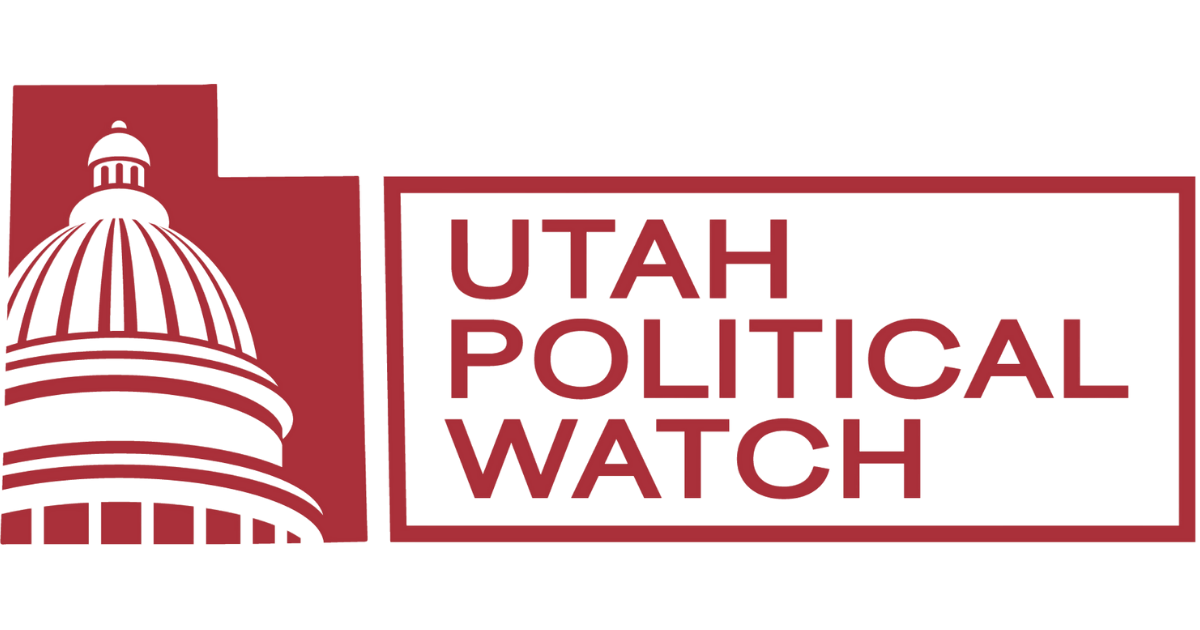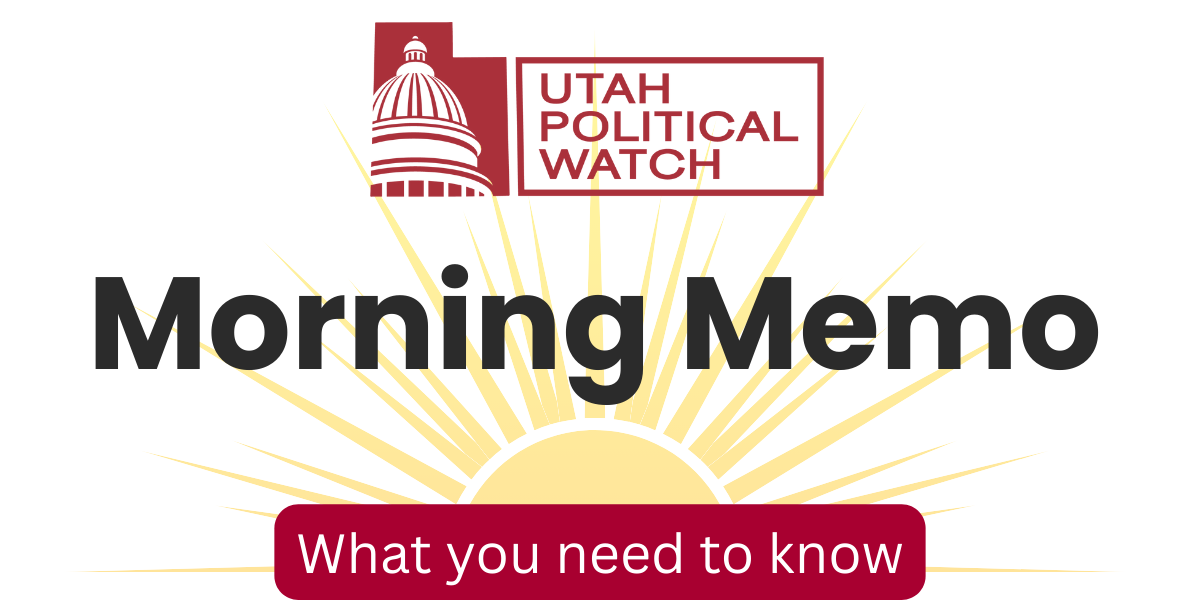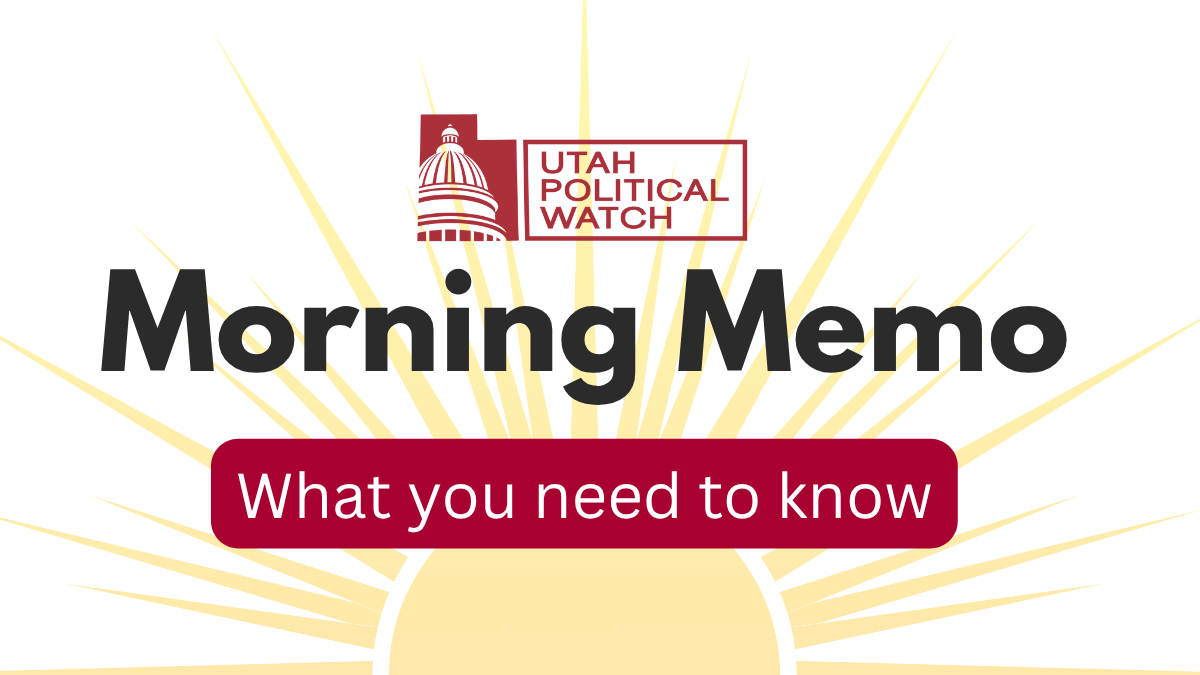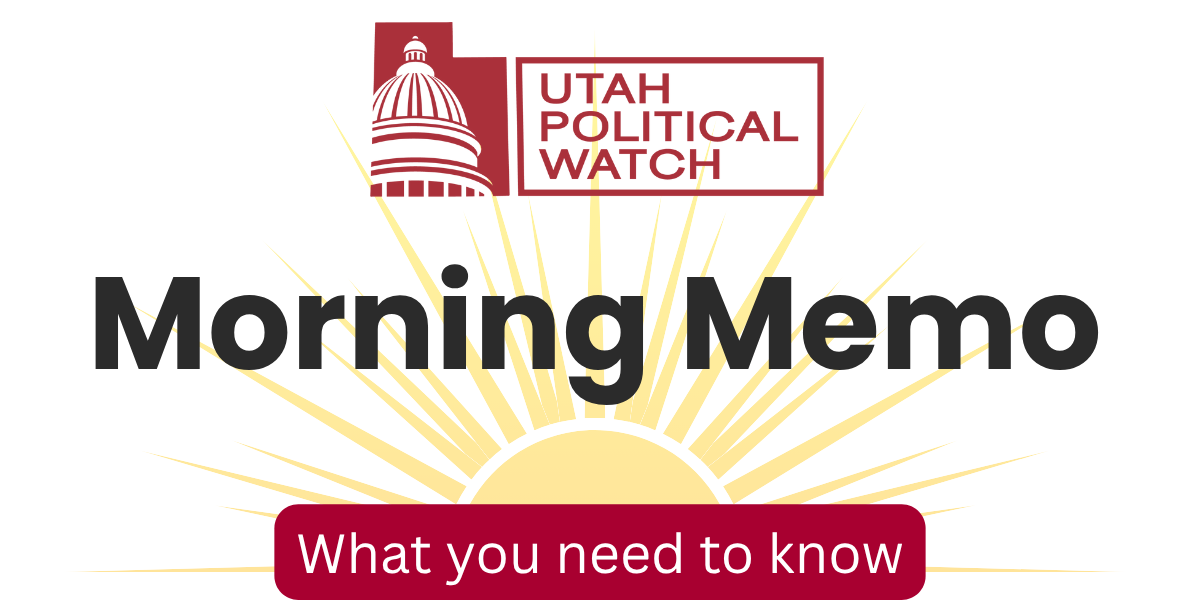• Every map proposed by the independent commission in 2021 would have created at least one Democratic-leaning congressional district.
• Democrat Kamala Harris would have carried at least one of Utah's four congressional districts in 2024 under all three maps put forward by the commission.
• Independent U.S. Senate candidate Evan McMullin would have won at least one district in all three map scenarios during his 2022 Senate run.
• Republicans maintained advantages in three of four districts under the commission's proposals.
Utah Republicans may have cost Democrats a congressional seat through an unconstitutional power grab, according to a court ruling that has thrown the state's political map into chaos.
In 2018, by a narrow margin, voters approved Proposition 4, a reform measure designed to crack down on gerrymandering by establishing an independent redistricting commission. The ballot measure set clear guardrails: commissioners couldn't use partisan data, needed to preserve community boundaries, and were explicitly prohibited from favoring incumbents or political parties. The legislature could reject maps drawn by the commission but had to follow those same rules if they came up with their own.
But the GOP-controlled legislature had other plans.
In 2020, they passed SB200, effectively gutting Prop. 4. While the independent commission remained, it was reduced to an advisory role. Lawmakers also freed themselves from the strict anti-gerrymandering rules established by the ballot measure.
During the 2021 redistricting process, the independent commission produced three separate congressional maps that followed Prop. 4’s requirements. Two proposals—dubbed “Orange” and “Purple”—created compact districts centered around population hubs in Salt Lake and Utah counties. A third proposal, “SH2,” submitted by a member of the public, created more of a pinwheel shape that’s similar to the map approved by lawmakers.
The Republican majority in the legislature ignored those three options, pushing through their own map that divided Salt Lake County into four pieces. The map surgically split up Democratic voters into four pieces, locking in Republican dominance.
Last month, Judge Dianna Gibson ruled that the legislature violated the Utah Constitution when they repealed Prop. 4, invalidating the maps approved by lawmakers. Lawmakers have until Sept. 25 to submit new maps that follow Prop. 4's rules. The legislature has appealed Gibson's ruling to the Utah Supreme Court.
An analysis of the commission’s proposed maps, using precinct-level data from Redistricter, puts a spotlight on what might have been: every single commission proposal created at least one district where Democrats had a clear electoral advantage.
The Numbers Behind the Maps
The Orange Plan
- Created strongest Democratic district (Harris +22)
- Would have given Democrats their best shot at representation
- Republicans maintained a solid advantage in the other three districts (Trump +24 to +45)
The Purple Plan
- One strong Democratic district (Harris +20)
- Preserved Republican advantage in remaining districts
- Created most geographically coherent boundaries
The SH2 Plan
- Democratic-leaning district (Harris +17)
- Most similar to legislature's eventual plan in shape
- Still maintained one competitive district
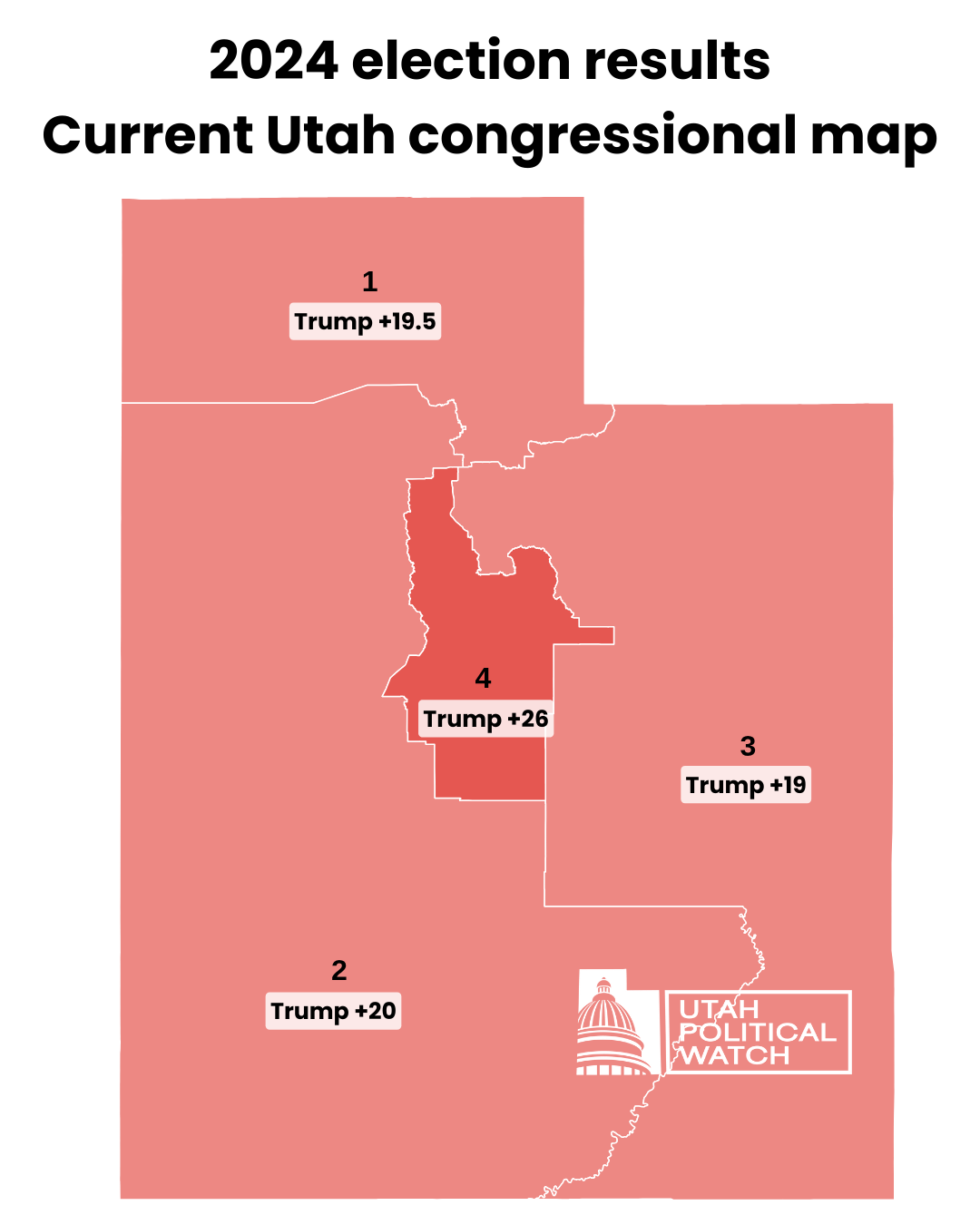
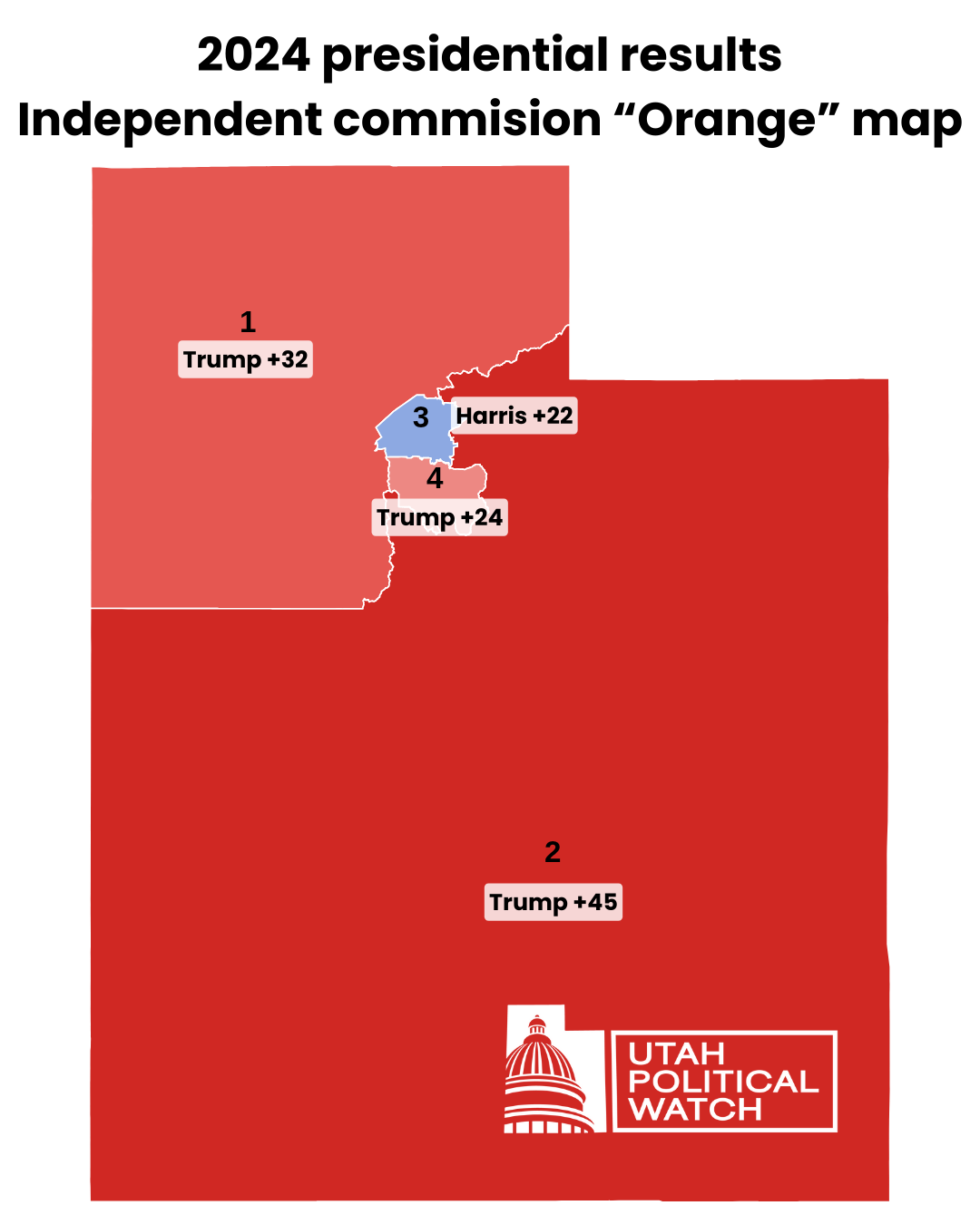
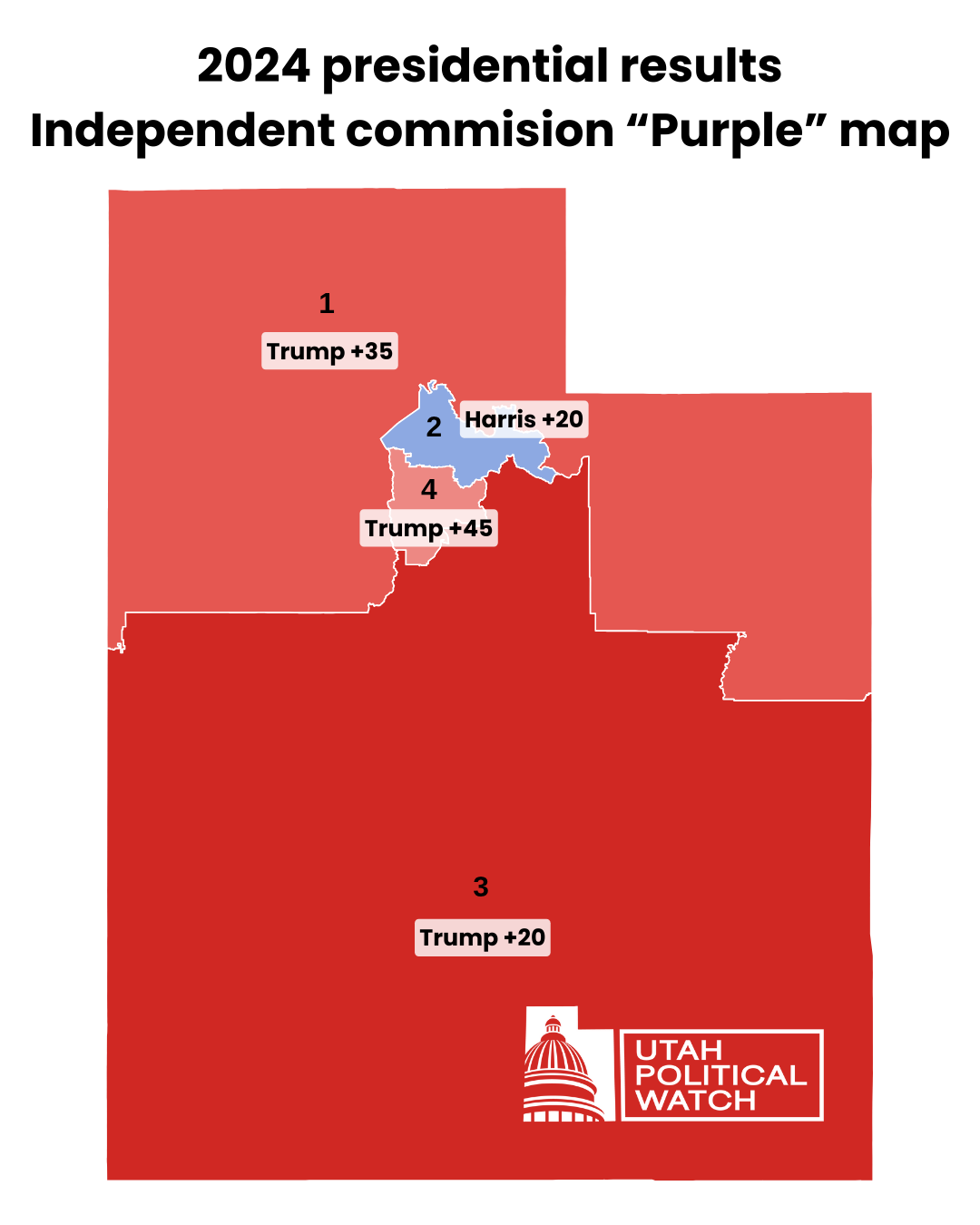

That Democratic advantage would still hold across all three map proposals when considering other statewide elections.
Under the commission maps, independent candidate Evan McMullin would have carried at least one district decisively during the 2022 U.S. Senate race against Republican Mike Lee.
- Orange map: McMullin +32
- Purple map: McMullin +29
- SH2 map: McMullin +26
Analysis of other election cycles reinforces the impact these maps could have had on Utah’s political landscape.
2020 Presidential & Gubernatorial Races
Each commission map showed consistent Democratic strength in one district:
Presidential Results (Biden vs. Trump)
- Orange Map: One district Biden +24
- Purple Map: One district Biden +21
- SH2 Map: One district Biden +29
Gubernatorial Results (Peterson vs. Cox)
- Orange Map: Peterson wins one district by 7 points.
- Purple Map: Peterson carries one district by 4 points.
- SH2 Map: Peterson carries one district by 5 points.
Precinct-level data was not available for the 2024 gubernatorial contest.
Other expert analyses of the commission’s maps when they were proposed also gave Democrats an advantage at the ballot box.
The Princeton Gerrymandering Project’s examination of all three independent commission map proposals concluded that it was more likely than not they would elect at least one Democrat to Congress.
- The Orange map would produce one district with a 13-point Democratic advantage. The remaining three seats were solidly Republican, with a GOP advantage anywhere between 40 and 50 points.
- The smallest Democratic advantage, approximately 10-points, came under the Purple map.
- The SH2 map also gives Democrats a partisan advantage of just over 10 points.
Similarly, PlanScore concluded the commission’s maps were extremely likely to elect one Democrat if there were not an incumbent running for re-election. Democrats would have a 95% chance to win an open seat under the SH2 map, a 97% chance under the Orange map, and a greater than 99% chance according to the Purple map.
